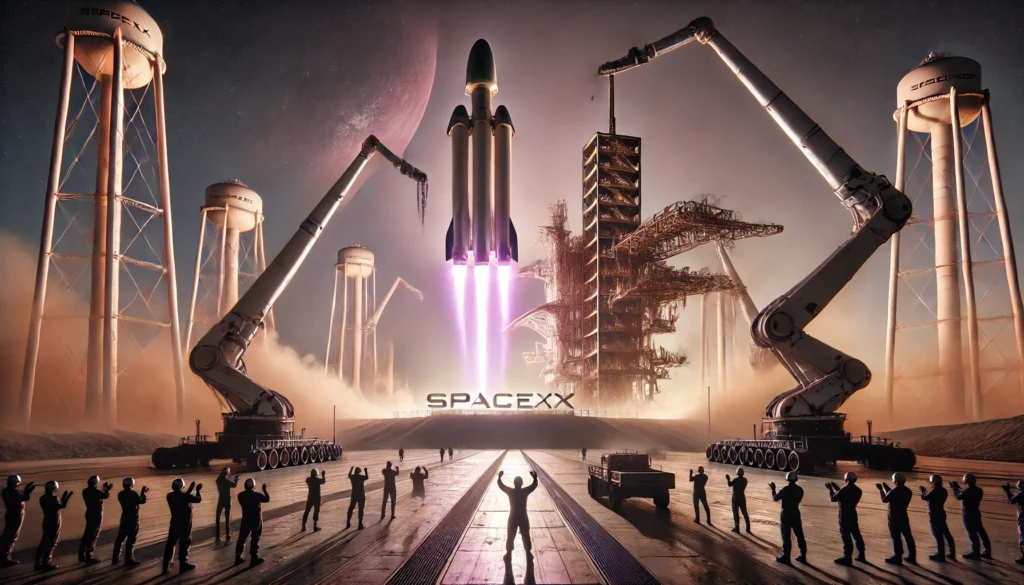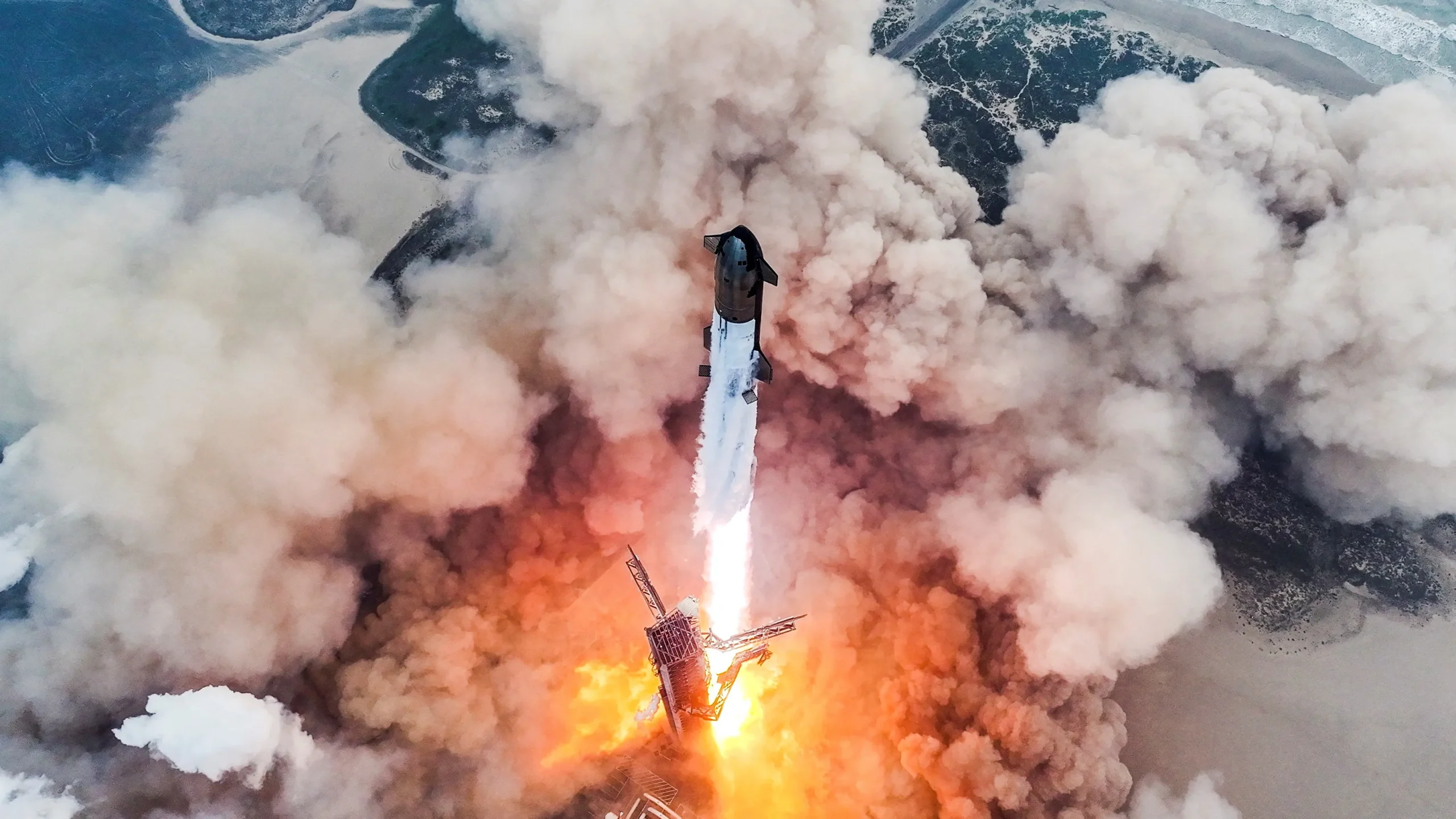SpaceX has conducted its fifth Starship test flight on Sunday, successfully returning the towering “Super Heavy” booster back to its Texas launch pad using giant mechanical arms for the first time.
The first stage of the rocket lifted off at 7:25 a.m. CT from SpaceX’s Boca Chica facility, marking another engineering milestone in the company’s quest to develop a fully reusable moon and Mars vehicle.
The Super Heavy booster reached an altitude of 70 km (40 miles) before separating from the second stage, known as Starship, to begin its controlled descent. Three of its 33 Raptor engines reignited, allowing the booster to slow down as it approached the launch site. The towering launch pad, fitted with two massive arms, caught the descending booster, with SpaceX CEO Elon Musk excitedly confirming the success via social media.
The novel “catch-landing” technique showcased the company’s latest advancement toward building a fully reusable rocket capable of transporting heavy cargo and humans to the moon and Mars. Musk described the event as a critical step in SpaceX’s test-to-failure campaign, designed to push the limits of rocket reusability and space exploration.

Meanwhile, Starship, the second stage of the rocket, soared into space, reaching a speed of 17,000 miles per hour. It performed a controlled reentry into Earth’s atmosphere, successfully demonstrating improved heat-shielding technology. After descending toward the Indian Ocean, it splashed down as planned, though it exploded upon impact in a dramatic conclusion that SpaceX engineers cheered.
The test mission’s success adds to SpaceX’s string of innovations. With the U.S. Federal Aviation Administration (FAA) granting approval for the launch just a day prior, SpaceX continues to push the boundaries of space travel, striving to make its vision of reusable spacecraft and interplanetary missions a reality.
